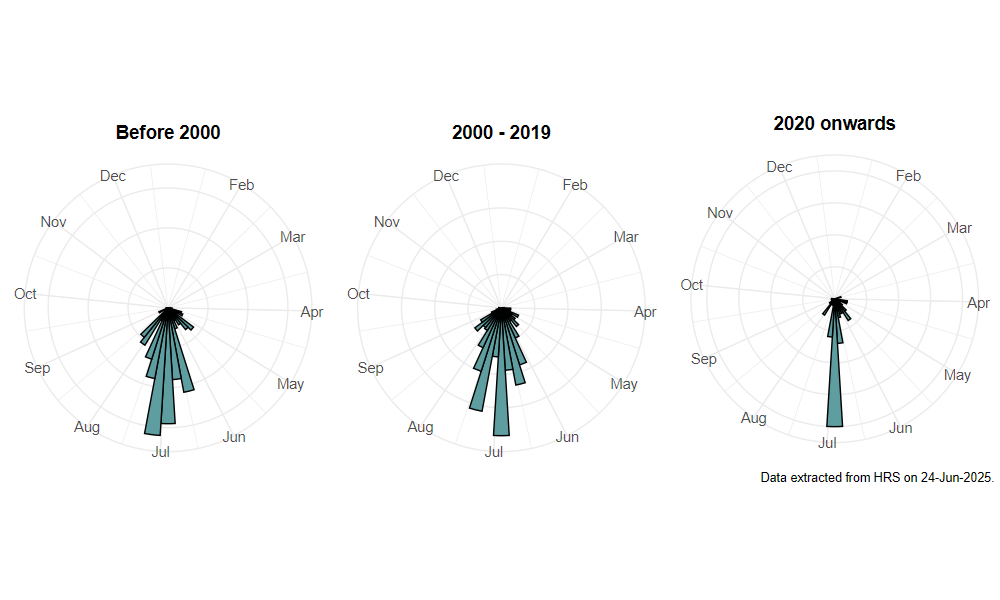Platycheirus occultus Goeldlin de Tiefenau, Maibach & Speight, 1990
Identification
Identification difficulty = 3. ![]()
![]() according to Ball & Morris, 20241
according to Ball & Morris, 20241
Synonymy
One of the species split from P. clypeatus by Speight & Goeldlin (1990)2 and Goeldlin et al. (1990)3.
Biology
Larva unknown. It is found in peaty wetlands including acid bog and moorland in the north and west; calcareous fen in eastern England; and wet heathland in southern-central England. Adults fly low down amongst lush vegetation and are usually found by sweeping, but also visit flowers.
Flight period
The following plots show the number of unique records per week excluding those reported to be of immature stages.

Distribution
This is a very widely distributed species with no obvious distribution features.

Trends
The following plots show the Frescalo TFactor vs year and a map of the rescaled frequency (all records) for the species.
-
Ball, S., & Morris, R. (2024). Hoverflies of Britain and Ireland. WILDGuides (3rd ed.). Oxford: Princeton University Press. ↩
-
Speight, M., & Goeldlin de Tiefanau, P. (1990). Keys to distinguish Platycheirus angustipes, P. europaeus, P. occultus and P. ramsarensis (Dipt., Syrphidae) from other clypeatus group species known in Europe. Dipterists Digest (first series), 5, 5–18. ↩
-
Goeldlin de Tiefanau, ., Maibach, A., & Speight, M. (1990). Sur quelques espèces de Platycheirus (Diptera, Syrphidae) nouvelles ou méconnues. Dipterists Digest (first series), 5, 19–43. ↩